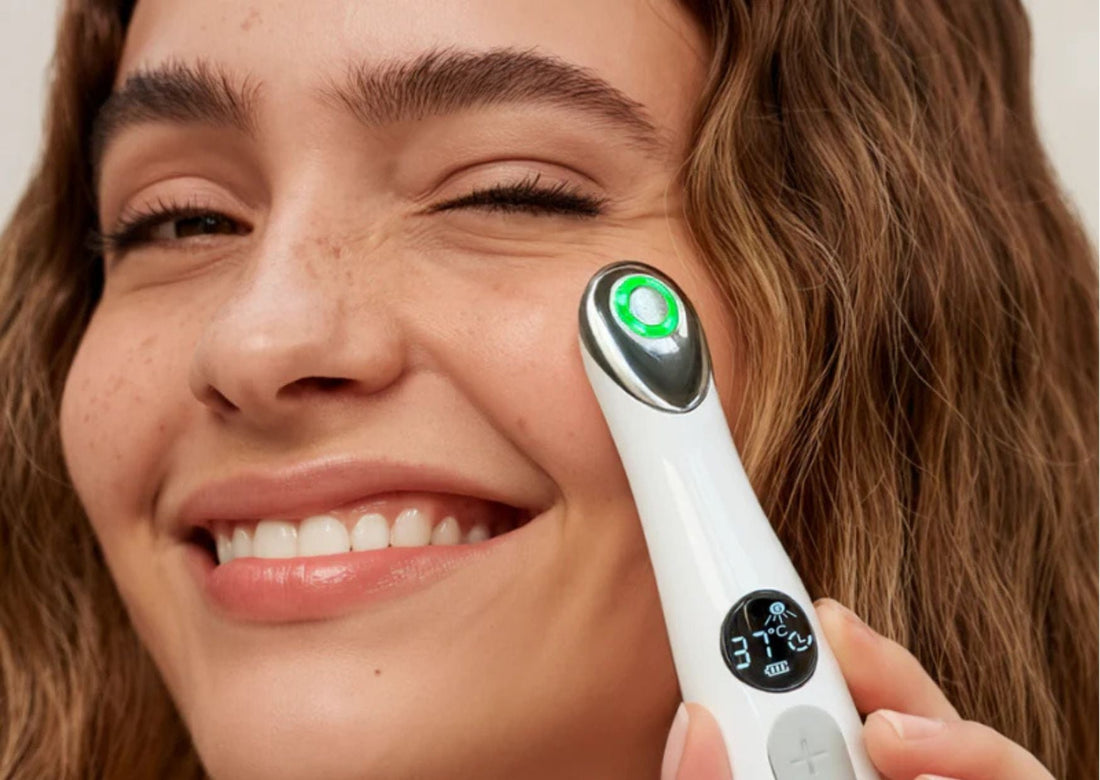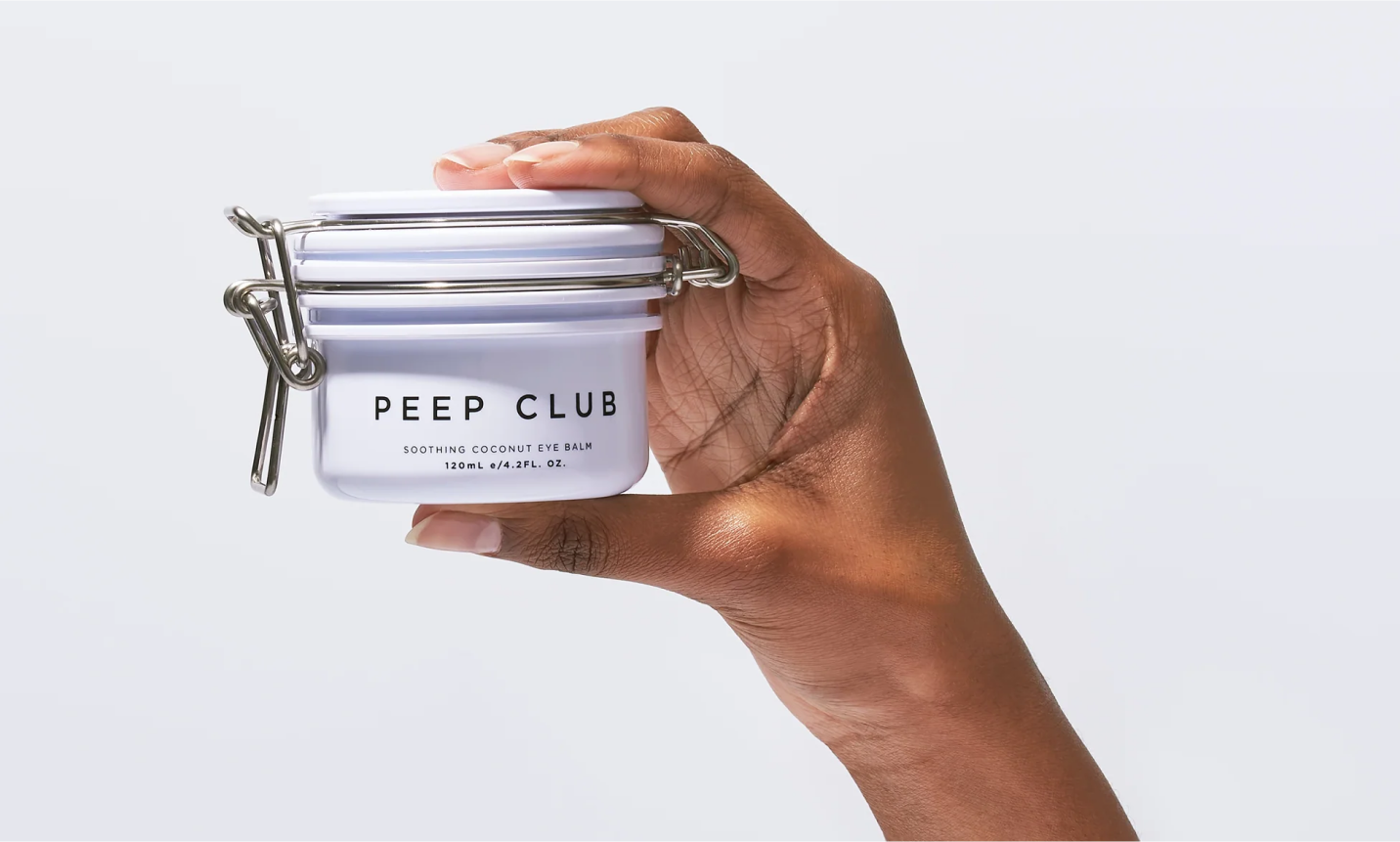
Is LED Light Therapy Safe for Eyes? What Dermatologists Recommend
Summary: LED light therapy is increasingly popular in skincare, but is it safe to use near your eyes? Learn what dermatologists and researchers say about red and green LED, plus tips on how to use them safely for brighter, healthier-looking eyes.
LED (light emitting diode) therapy has become popular for its ability to calm inflammation, improve skin appearance, and reduce pigmentation. Recently, at-home devices have been introduced for use around the eyes. Because this area is delicate, understanding how to use LED safely is essential.
What the Research Says About LED Safety for Eyes
The Cleveland Clinic notes that red light therapy appears to be safe when used short-term and as directed (Cleveland Clinic).
Dr. Elizabeth Buzney of Harvard Medical School suggests that LED light therapies are generally safe for short-term use, primarily because they do not utilise harmful UV light and produce little heat. However, this safety is not absolute; it is essential to protect your eyes, be aware of potential sensitivities due to certain medications or health conditions, and consult a dermatologist to ensure the treatment is appropriate for your individual needs, as long-term effects are still not well understood (Harvard Health).
Research has also explored the effects of green LED. A 2022 study in Frontiers in Medicine found that green LED reduced inflammatory cytokines in skin cells, suggesting a soothing and calming effect on sensitive skin (Frontiers in Medicine, 2022).
What Dermatologists and Eye Experts Recommend
1. Always read instructions
With any LED device, read the instruction manual before use and follow the manufacturer’s guidance for eye protection and safe use around the eyes.
2. Do not use LED directly on the upper eyelid
The upper eyelid is extremely delicate and not suitable for direct LED application. Instead, focus on the orbital bone, under the eyes, and the outer corners, where targeted use is both safe and effective.
3. Choose wavelengths wisely
Red LED has been studied extensively and is associated with calming inflammation and supporting skin health. Green LED has been shown to reduce inflammation and soothe the skin. Both are gentler options for the eye area than blue or ultraviolet light, which penetrate more deeply and may increase irritation.
4. Limit duration and frequency
Most devices recommend 5 to 10 minutes per session, two to four times per week. Overuse may lead to irritation without added benefit.
5. Consult a professional if you have eye conditions
If you have glaucoma, retinal disease, corneal injury, or uncontrolled dry eye, consult an optometrist or ophthalmologist before using LED devices near your eyes.
How to Integrate LED Safely with Your Eye Care Routine
The Heated Eye Wand LED+ is designed for direct skin contact, making it easy to target the orbital bone, under-eye area, and outer corners. This offers precise treatment that flat LED masks cannot provide. Do not use the Heated Eye Wand LED+ on the upper eyelid.
- Use the Heated Eye Wand LED+ as directed, keeping it in gentle contact with the skin for the recommended time.
- Follow with Instant Relief Eye Spray to hydrate and refresh the surface of the eyes.
- Apply Eye Rescue Lidstick at night to nourish and brighten delicate eyelid skin with ingredients like Oat Ceramides, Evening Primrose Oil, Kakadu Plum, and New Zealand Manuka Oil.
FAQs
Q: Is LED light therapy safe for the eyes?
A: Yes, when used correctly and according to instructions. Avoid direct use on the upper eyelid and follow safety guidance.
Q: Which LED colours are safest near the eyes?
A: Red and green LEDs are considered gentle options when used as directed. Blue and ultraviolet light are less suitable near the eyes.
Q: Do I need to wear goggles with at-home LED?
A: Always follow the device’s manual. Some devices require protective eyewear, while others designed for direct skin contact, like the Heated Eye Wand LED+, do not.
Q: How often should I use LED around the eyes?
A: Typically two to four times per week for 5 to 10 minutes, unless your device’s manual specifies otherwise.
Q: Can LED replace other eye care steps?
A: No. LED is one part of a balanced routine. Hydration, cleansing, and nourishing the eyelids remain essential.

